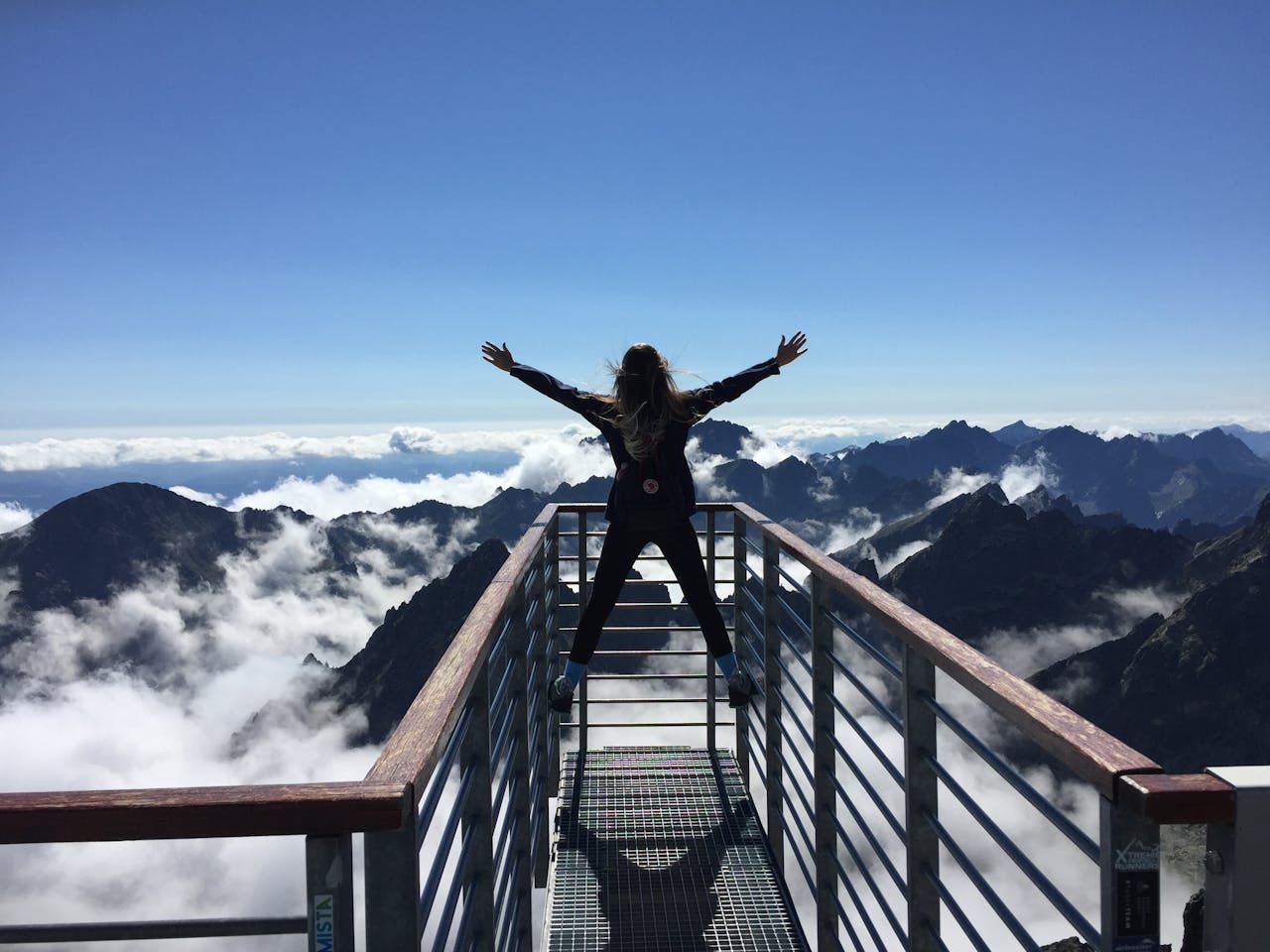
Pose Guide
Say Goodbye to Awkward Camera Moments
Easy-to-learn posing techniques to help you photograph confidently in any situation.
No more camera shyness – every photo shows your best self.
Selfie Poses
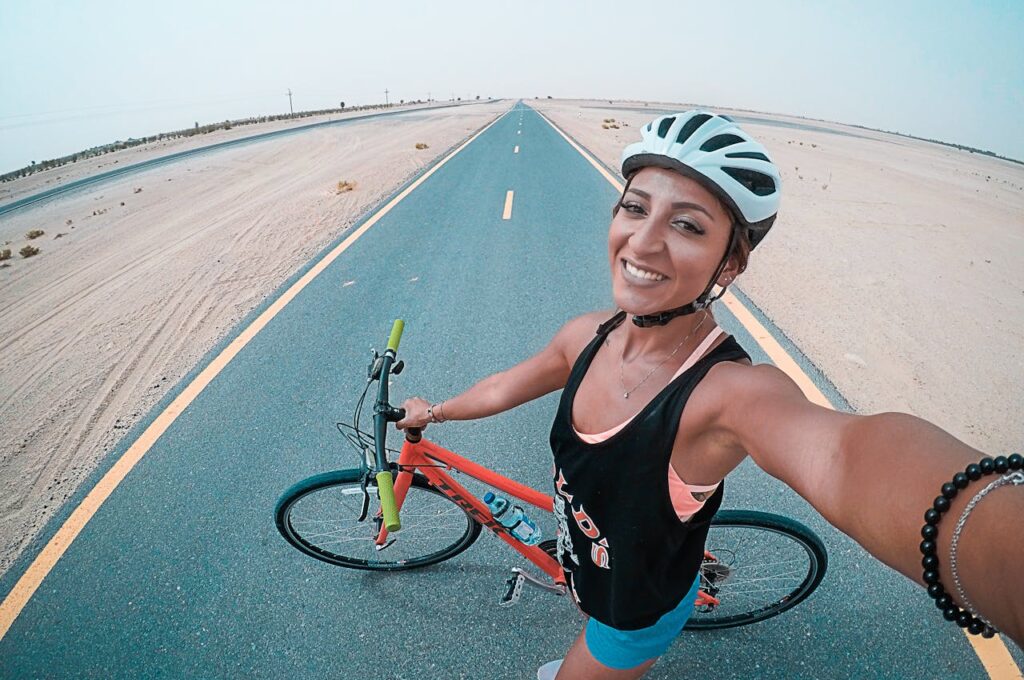
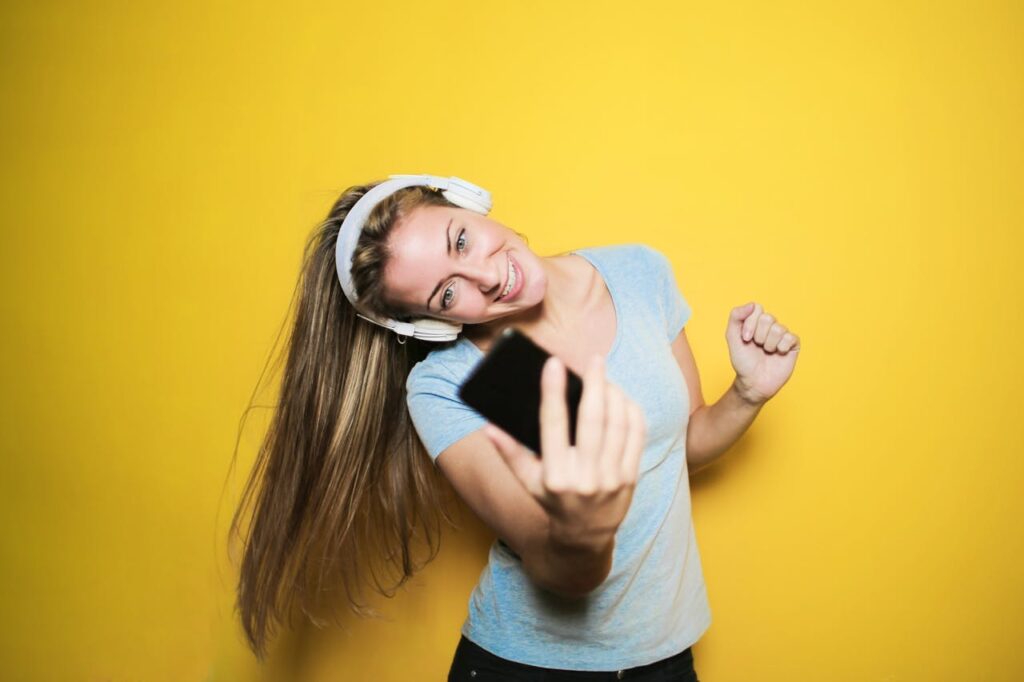
Facial Angles and Expressions: Finding Your Best Angle
The Golden 45-Degree Rule:
Most people's best shooting angle is slightly turned 45 degrees, this angle can:
• Make face appear smaller, highlight facial contours
• Avoid the flat feeling of frontal shooting
• Reduce the appearance of double chin
• Make facial features more three-dimensional
How to find your best angle:
1. Face a mirror or front camera, slowly turn your head
2. Observe which angle makes your facial contours clearest
3. Notice changes in eye size and nose shape
4. Remember this angle and repeat it when taking photos
Expression Control Techniques:
1. Smile practice - Imagine corners of mouth gently lifting, eyes should "smile" too
2. Eye techniques - Look slightly above the lens for more spirited eyes
3. Relax face - Take deep breaths before shooting, relax facial muscles
4. Natural expressions - Imagine chatting with a good friend
Avoid Common Mistakes:
• Don't smile too widely, it can look unnatural
• Avoid squinting or staring, keep eyes naturally open
• Don't force expressions, natural is most beautiful
• Avoid excessive head tilting up or down, maintain natural angle
Stable Selfie Techniques: Say Goodbye to Blurry Photos
Stable Grip Techniques:
1. Two-handed grip - Hold phone with one hand, support with the other
2. Elbow support - Rest elbow on table or body for added stability
3. Breath control - Hold breath at the moment of shooting to reduce shake
4. Burst mode - Use burst function, select the clearest photo
Optimal Shooting Distance:
• 2/3 of full arm extension is best
• Too close causes facial distortion
• Too far loses detail and clarity
• Maintain 1-1.5 meter distance when using selfie stick
Light Selection:
• Face the light source, avoid backlighting
• Use natural window light for best results
• Avoid overhead lighting, creates shadows
• Overcast soft light is ideal for selfies
Creative Prop Selfies: Make Your Selfies Stand Out
Creative use of everyday items:
1. Coffee/tea cups - create a lived-in feel, can partially cover face for mystery
2. Books/magazines - show intellectual temperament, can serve as foreground elements
3. Flowers/plants - add natural freshness, suitable for spring/summer shooting
4. Hats/sunglasses - add fashion sense, change overall style
5. Pets - add warmth and interactivity
Seasonal prop recommendations:
Spring: cherry blossoms, kites, umbrellas
Summer: ice cream, sunglasses, beach balls
Autumn: fallen leaves, scarves, hot drinks
Winter: snowflakes, gloves, Christmas decorations
Prop usage techniques:
1. Don't let props steal the spotlight - you are the focus of the photo
2. Choose props that coordinate with clothing colors
3. Props should match the shooting scene and atmosphere
4. Use props to create foreground or framing effects
5. Props can help you relax and reduce camera anxiety
Creative composition methods:
1. Shoot through props - such as through flowers, leaves, etc.
2. Prop blocking - partially block face for added mystery
3. Prop interaction - natural interaction with props, like smelling flowers, tasting tea
4. Prop decoration - place props as decorative elements in the frame
Safety considerations:
• Ensure props won't harm you or others
• Consider others' feelings when using props in public spaces
• Avoid using fragile or valuable items as props
• Pay attention to prop cleanliness and hygiene
Everyday Life Poses
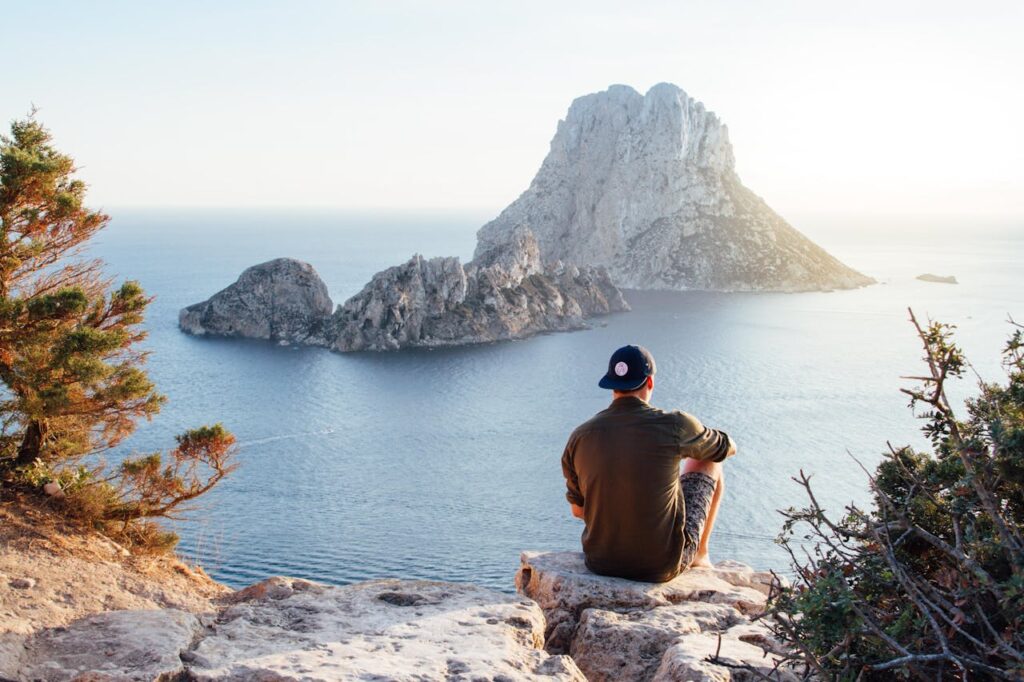
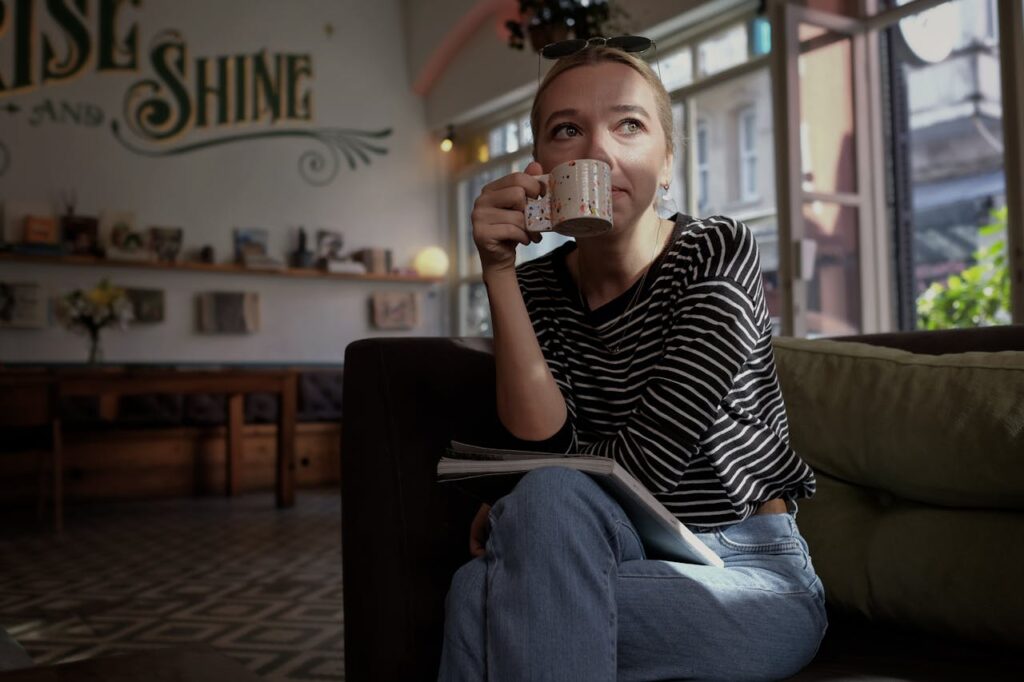
Social Occasion Poses: Becoming the Focus at Gatherings
Group photo techniques at parties:
1. Position selection - avoid edges, choose center-front positions
2. Body angle - body slightly turned, shoulders relaxed and lowered
3. Arm position - avoid pressing against body, slightly open for spatial sense
4. Expression management - maintain natural smile, eyes looking at camera
Restaurant dining photography:
1. Elegant sitting - straight back, legs together or crossed
2. Hand movements - lightly hold utensils or cups for naturalness
3. Food interaction - pretend to taste or smell, create lived-in feeling
4. Background utilization - choose restaurant decor or window views as background
Bar/cafe scenarios:
1. Leaning poses - casually lean against bar or table for natural look
2. Drink props - toasting or tasting gestures
3. Conversation state - natural moments of chatting with friends
4. Environment integration - use lighting and decor to create atmosphere
Shopping scene photography:
1. Try-on display - naturally show new clothes, can turn or adjust clothing
2. Product interaction - selecting or comparing items
3. Mirror utilization - use store mirrors for interesting angles
4. Shopping bag props - satisfied expressions while carrying shopping bags
Avoiding social photo awkwardness:
• Communicate photo plans with friends in advance
• Don't take frequent photos while others are eating
• Be mindful not to disturb other customers
• Respect friends who don't want to be photographed
Outdoor Environment Poses: Harmonizing with Nature
Park/garden photography:
1. Flower interaction - naturally smelling flowers, gently touching petals
2. Tree leaning - casually lean against large trees for comfort
3. Path strolling - dynamic moments of walking, appearing lively and natural
4. Grass sitting - cross-legged or side-sitting, close to nature
Beach/lakeside scenes:
1. Gazing into distance - looking at horizon or lake surface, creating contemplative state
2. Beach walking - barefoot freedom on sand
3. Water play - lightly touching water surface or collecting shells
4. Sunset silhouettes - use sunset to create romantic silhouette effects
Mountain/hiking scenes:
1. High vantage point - standing high and looking far with heroic posture
2. Rest moments - naturally sitting on rocks or logs while resting
3. Exploration discovery - curious expressions while observing plants or scenery
4. Victory poses - expressing achievement upon reaching summit
Urban street photography:
1. Architectural backgrounds - use distinctive buildings as backgrounds
2. Street strolling - dynamic beauty of natural walking
3. Coffee to-go - urban lifestyle with coffee cup in hand
4. Waiting moments - daily moments waiting for bus or subway
Weather adaptation techniques:
Sunny: use shadows to avoid harsh sunlight, seek soft lighting
Cloudy: fully utilize even soft light, colors more saturated
Rainy: umbrella props, water drop reflections, create romantic atmosphere
Snowy: snowflakes dancing, warm clothing contrast, winter warmth
Indoor Scene Poses: Showcasing Yourself in Comfortable Spaces
Home environment photography:
1. Lazy in bed - naturally lying or half-sitting, showing relaxed state
2. Window reading - use natural light to create literary atmosphere
3. Kitchen cooking - life-like moments of food preparation or tasting
4. Sofa rest - comfortable sitting, can hug pillows for warmth
Office/study environment:
1. Focused work - serious working or studying state
2. Thinking moments - chin resting in thought or gazing out window
3. Break intervals - stretching or drinking water relaxation moments
4. Achievement display - satisfied expressions showing work results
Gym/sports venues:
1. Exercise state - dynamic moments during workout
2. Rest hydration - drinking water or wiping sweat during exercise breaks
3. Equipment interaction - focused expressions using fitness equipment
4. Result showcase - confident postures showing exercise achievements
Mall/indoor public spaces:
1. Elevator selfies - interesting angles using elevator mirrors
2. Staircase photos - dynamic beauty of going up/down stairs
3. Rest areas - natural sitting on rest chairs or sofas
4. Art installations - interaction with indoor artworks or decorations
Indoor lighting utilization:
1. Window natural light - best indoor light source, soft and even
2. Lighting atmosphere - use indoor lighting to create mood
3. Avoid overhead lighting - avoid direct overhead illumination causing shadows
4. Reflection utilization - use white walls or mirrors to reflect light
Indoor photography considerations:
- Keep background tidy, avoid cluttered items in frame
- Choose appropriate clothing colors coordinating with indoor environment
- Protect privacy, avoid exposing personal information
- Respect others' space, moderate photography in public spaces
Special Occasion Poses
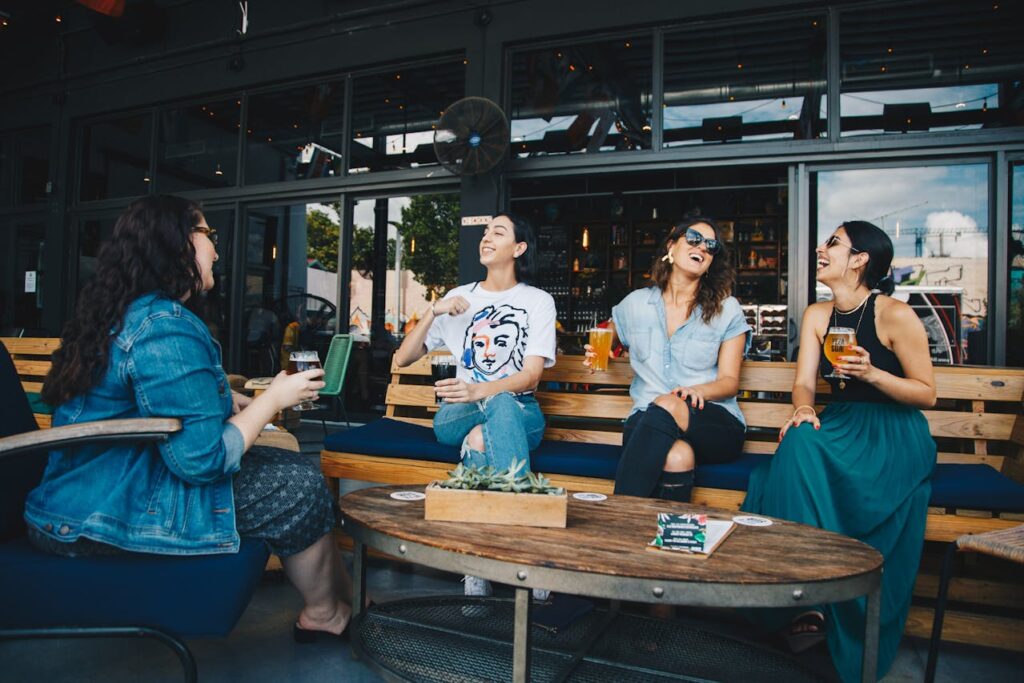
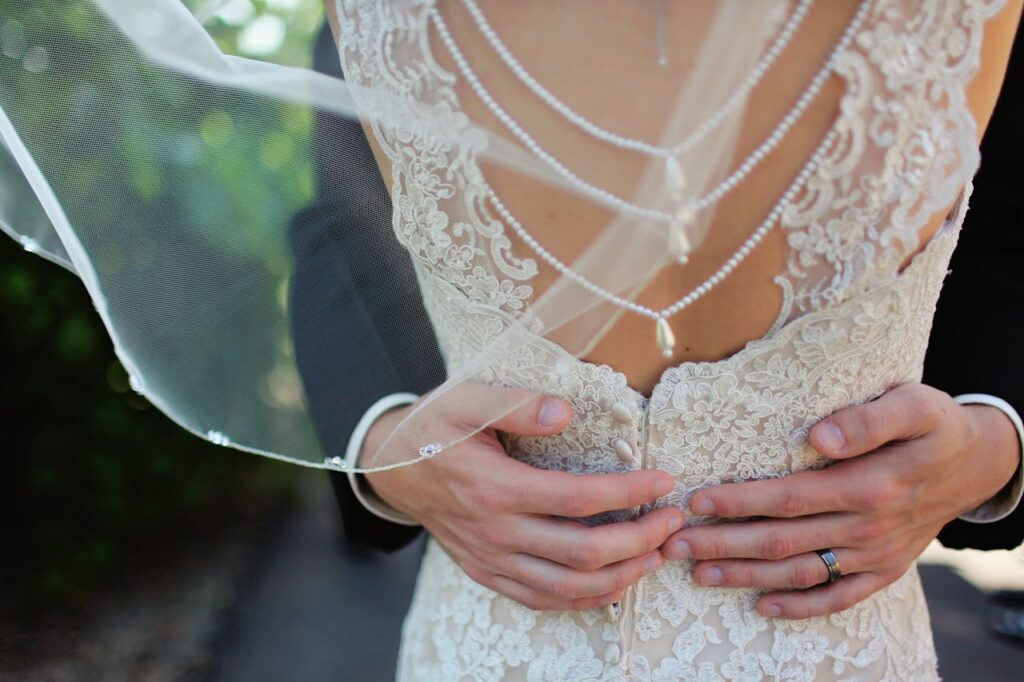
ID photo shooting points:
1. Proper sitting - straight back, parallel shoulders, avoid tilting
2. Facial angle - face camera directly, chin slightly tucked, avoid looking up
3. Focused gaze - look directly at camera with confident eyes
4. Natural expression - smile or serious expression should be natural, avoid stiffness
5. Neat clothing - choose appropriate formal wear, pay attention to neckline and shoulder line
Graduation individual photos:
1. Academic gown wearing - ensure gown is neat, cap worn correctly
2. Hand position - can lightly hold diploma or let hands hang naturally
3. Background selection - choose school's iconic buildings or landscapes
4. Expression management - show sense of achievement and anticipation for future
Graduation group photos:
1. Neat arrangement - arrange by height, ensure everyone is clearly visible
2. Unified actions - can throw caps together or make victory gestures
3. Consistent expressions - unified smiles or serious expressions
4. Timing - choose optimal lighting time for shooting
Professional image photo requirements:
1. Professional attire - choose formal wear appropriate for industry
2. Dignified posture - reflect professional competence and credibility
3. Simple background - avoid distracting background elements
4. Even lighting - ensure sufficient and even facial lighting
Common problem solutions:
- Double chin: extend chin slightly forward while tucking
- Prominent eye bags: adequate sleep, cold compress before shooting
- Stiff expression: do facial relaxation exercises before shooting
- Uneven shoulders: check shoulder height, adjust sitting posture if necessary
Business formal shooting:
1. Standing posture - feet parallel, weight evenly distributed
2. Hand position - can cross in front, behind back, or hang naturally
3. Serious expression - maintain professional yet approachable expression
4. Firm gaze - look directly at camera, convey confidence and reliability
Different industry image requirements:
Finance/Legal industry:
- Dark formal wear, conservative and stable
- Serious professional expression, showing authority
- Proper posture, demonstrating credibility
- Simple background, highlighting professionalism
Creative/Design industry:
- Can choose clothing with design sense
- Expression can be more approachable and energetic
- Posture can be slightly relaxed and natural
- Background can have creative elements
Medical/Education industry:
- White or light-colored professional wear
- Gentle and kind expression, showing care
- Professional posture without losing approachability
- Clean and professional background
Tech/Internet industry:
- Business casual or formal wear both acceptable
- Confident and energetic expression
- Posture can be slightly relaxed
- Modern and minimalist background
Shooting angle selection:
1. Front shooting - most formal, suitable for ID photos and official images
2. 45-degree angle - more dimensional, suitable for business promotion
3. Side shooting - show profile, suitable for industries with high artistic requirements
Lighting and makeup suggestions:
- Use soft and even lighting, avoid strong shadows
- Makeup should be natural, highlighting mental state
- Men should pay attention to beard trimming and neat hairstyle
- Women's makeup should be professional and appropriate, not too heavy
Spring Festival/New Year celebration:
1. Traditional clothing - wear red or traditional attire to reflect festive atmosphere
2. Holiday props - use red envelopes, lanterns, spring couplets and other traditional elements
3. Family photos - warm scenes of multiple generations together
4. Blessing gestures - cupped hands greeting or heart gestures for good luck
Birthday celebration photography:
1. Wishing moment - classic actions of closing eyes to make a wish or blowing candles
2. Cake cutting - focused expression while cutting cake
3. Receiving gifts - surprised expression when unwrapping gifts
4. Celebration gestures - V-sign or open arms in joyful posture
Wedding-related photography:
1. Couple photos - sweet moments of looking at each other and smiling or embracing
2. Ring exchange - solemn and sacred ceremonial feeling
3. Friends' blessings - joyful scenes of toasting or throwing petals
4. Wedding dress display - elegant poses showing the beauty of wedding dress
Holiday dinner photography:
1. Toasting celebration - united scene of everyone raising glasses together
2. Food tasting - satisfied expressions while enjoying delicious food
3. Cheerful conversation - natural moments of chatting and communicating
4. Group commemoration - warm group photos around the dining table
Outdoor holiday activities:
1. Fireworks viewing - amazed expressions while looking up at fireworks
2. Parade participation - excited state of participating in holiday parades
3. Performance watching - focused expressions while watching performances
4. Interactive participation - happy moments participating in holiday games or activities
Holiday photography techniques:
- Learn about holiday traditions and customs in advance, incorporate relevant elements
- Pay attention to clothing color coordination with holiday themes
- Capture genuine emotions, avoid over-posing
- Use holiday decorations and lighting to create atmosphere
- Take more detail and close-up shots to record holiday characteristics
Couple/Group Poses
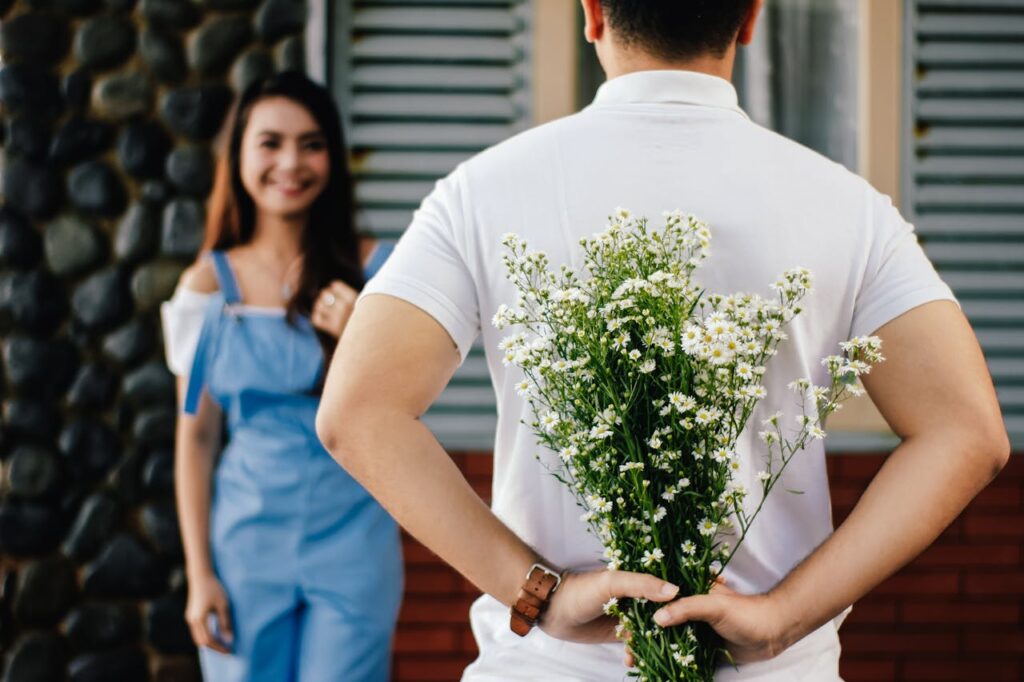
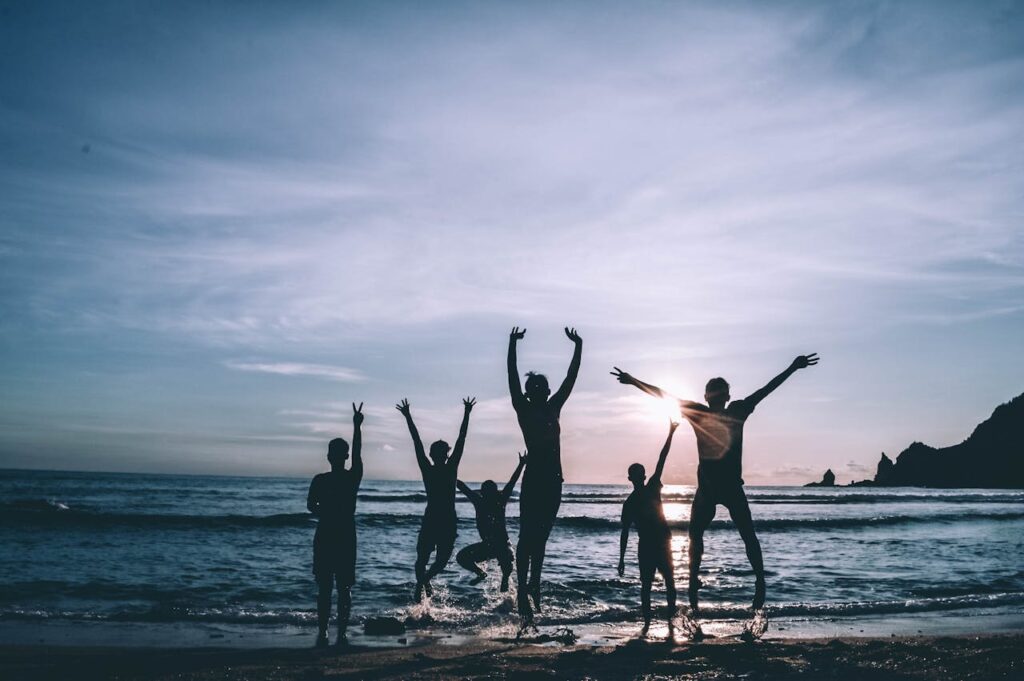
Classic couple photo poses:
1. Looking at each other and smiling - face to face, eye contact, natural smiles
2. Hugging and kissing - gentle embrace or forehead kiss sweet moments
3. Holding hands - fingers interlocked or lightly holding each other's fingers
4. Back hug - one person embracing the other from behind in warm scene
5. Standing side by side - shoulders lightly touching, looking into distance together
Height difference handling:
Tall and short person:
- Tall person can slightly bend or squat down
- Short person can stand on tiptoes or steps
- Use sitting positions to reduce height differences
- Staggered standing to create layers
Friend photo poses:
1. Shoulders touching - showing intimate friendship
2. Making faces - lively and interesting expression interactions
3. Heart gestures - making heart signs together
4. Jumping moment - dynamic scene of jumping simultaneously
5. Back to back - standing back to back, showing understanding
Parent-child photography techniques:
1. Squat to eye level - adults squat to maintain same height as children
2. Lifting high - joyful moments of lifting children up
3. Hand-in-hand walking - warm scene of big hand holding small hand
4. Kissing and hugging - natural actions expressing family affection
5. Game interaction - happy expressions while playing together
Two-person composition techniques:
1. Symmetrical composition - symmetrical positioning for balance
2. Triangle composition - use bodies to form stable triangular composition
3. Front-back layers - one in front, one behind to add depth
4. Dynamic-static combination - contrast of one person moving, one static
Naturalization suggestions for interaction:
- Chat and relax before shooting to reduce tension
- Take multiple shots, choose most natural expressions
- Let one person make the other laugh
- Use common topics or memories to increase authenticity
Basic arrangement principles:
1. Height arrangement - tall people in back row, short people in front
2. Clear layers - create front, middle, and back layers
3. Unified sight lines - everyone looking in same direction
4. Even spacing - maintain appropriate distance between people
Small groups (3-6 people):
1. Line arrangement - suitable for groups with similar heights
2. Triangle arrangement - one person in center, one on each side
3. Arc arrangement - form natural curved line
4. Staggered arrangement - front and back offset for layers
Medium groups (7-15 people):
1. Two-row arrangement - front row sitting or squatting, back row standing
2. Stair arrangement - use steps to create height levels
3. Fan arrangement - spread out from center point
4. Pyramid arrangement - more people at bottom, fewer at top
Large groups (15+ people):
1. Multi-row arrangement - three or four row level arrangements
2. Center focus - important people in center, others surrounding
3. Symmetrical arrangement - balanced left-right symmetrical composition
4. Natural gathering - simulate casual arrangement of natural gatherings
Special situation handling:
Large height differences:
- Have tall people sit or squat
- Use steps or different height positions
- Staggered arrangement to avoid obvious height contrasts
Clothing color coordination:
- Avoid adjacent people wearing same colors
- Light-dark matching to create visual layers
- Unified tone or theme colors
Unified expressions and actions:
- Communicate unified expressions or gestures in advance
- Can choose serious, smiling, or lively styles
- Avoid individual expressions inconsistent with the group
Shooting angle selection:
1. Front shooting - most traditional, suitable for formal occasions
2. Slightly high angle - makes people look more energetic, reduces double chins
3. Wide-angle shooting - includes more people and background
4. Group shooting - large groups can be divided into several small groups
Group photo success factors:
- Choose appropriate shooting location and background
- Ensure everyone is clearly visible
- Unified lighting conditions
- Take multiple shots to ensure everyone has good expressions
- Arrange order in advance to save time
Nuclear family photos (parents + children):
1. Triangle composition - parents on sides, children in middle forming stable triangle
2. Circular composition - family members in circle, reflecting unity and harmony
3. Layered composition - use height differences to create front-middle-back layers
4. Interactive composition - capture natural interactions between family members
Multi-generational photos:
1. Center focus - elders in center, other members arranged around
2. Group arrangement - arrange in small groups by family branches
3. Stair arrangement - use sofas, steps to create height levels
4. Natural gathering - simulate natural state of family gatherings
Different age group combinations:
Infant and toddler family photos:
- Parents sitting holding children, creating sense of security
- Use props like strollers, cribs
- Capture children's natural expressions and movements
- Choose times when children are in best spirits
School-age children family photos:
- Can add game elements to help children relax
- Use children's interests and hobbies as props
- Encourage children to show personality and vitality
- Take more dynamic photos to record growth moments
Teenager family photos:
- Respect teenagers' individual expression
- Can choose more fashionable shooting styles
- Avoid overly childish props and backgrounds
- Give some autonomy in choices
Family photo scene selection:
Home environment:
- Living room sofa - warm and comfortable family atmosphere
- Kitchen dining room - life-like dining scenes
- Garden yard - natural and relaxed outdoor feeling
- Children's room - reflect family life details
Outdoor locations:
- Park grassland - natural and fresh environment
- Beach seaside - vacation and leisure atmosphere
- City landmarks - commemorative significance background
- Amusement places - joyful and lively scenes
Family photo shooting techniques:
1. Time selection - choose times when family members are in best condition
2. Clothing coordination - harmonious color matching, unified style
3. Prop usage - use family items to add life feeling
4. Emotional expression - encourage genuine emotional expression
5. Multi-angle shooting - record family time from different angles
Special moment recording:
- Holiday celebrations - birthdays, Spring Festival and other special holidays
- Important milestones - graduation, school advancement, work, etc.
- Daily life - dining, games, studying, etc.
- Travel vacations - beautiful memories of family trips
Practical Tips Summary
Universal Principles:
1. Natural is most important – Don’t be overly artificial, stay true to yourself
2. Practice makes perfect – Practice in front of mirror, find the most suitable angles
3. Relax mindset – Tension makes poses stiff, take deep breaths and relax
4. Observe and learn – Learn excellent poses from magazines and social media
5. Adapt to circumstances – Adjust poses according to occasions and environments
Common Mistakes to Avoid:
• Don’t always use the same pose
• Avoid excessive force, stay natural
• Don’t ignore background and environment
• Avoid uncomfortable poses
• Don’t be afraid to try new poses
Pre-Photo Preparation:
• Check appearance and grooming
• Choose appropriate clothing
• Understand shooting environment
• Prepare necessary props
• Adjust mental state
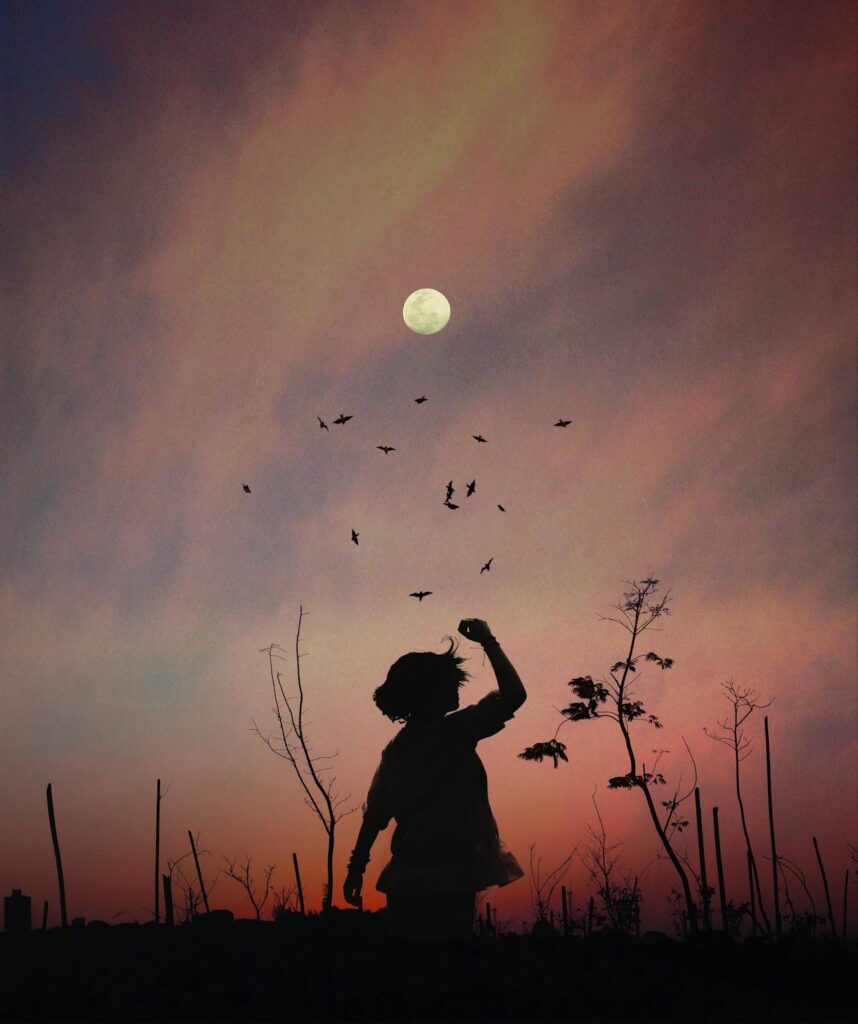

Related Page Recommendations
Practice Suggestions:
1. Practice one new pose every day
2. Take before-and-after comparison photos, observe progress
3. Take photos with friends, exchange experiences
4. Follow excellent photography works, learn posing techniques
5. Record your own photography insights and techniques